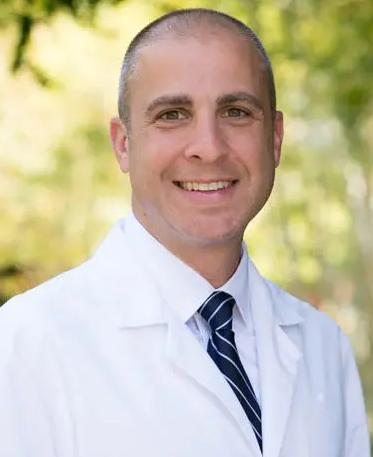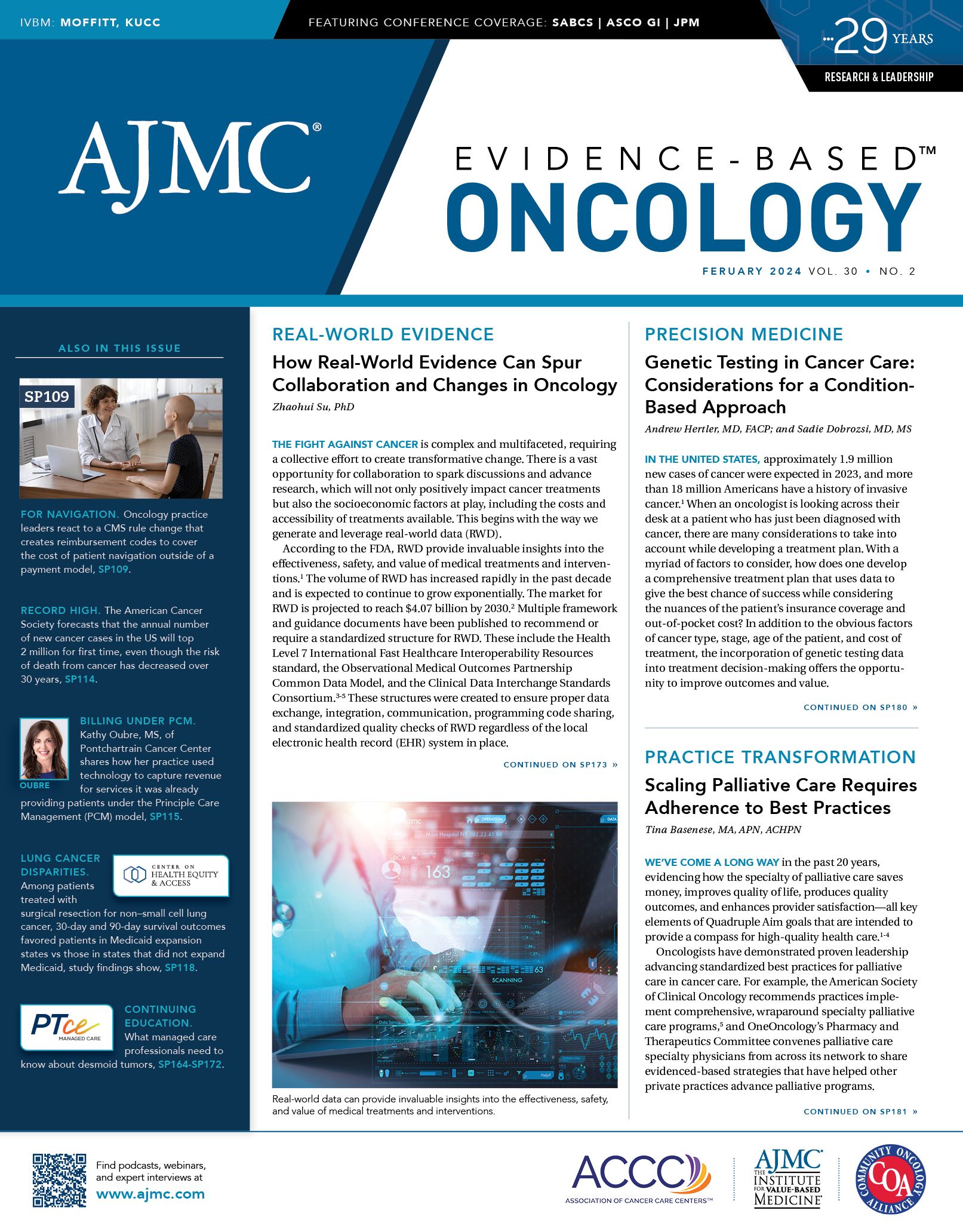- Center on Health Equity & Access
- Clinical
- Health Care Cost
- Health Care Delivery
- Insurance
- Policy
- Technology
- Value-Based Care
Treatment of Childhood Cancer Survivors With Carvedilol Improved Biomarker Linked to Heart Health, Study Finds
Findings from PREVENT-HF put to rest the idea that once remodeling in the heart's structure starts following anthracyclines that nothing can be done to treat it.
Giving childhood cancer survivors the beta blocker carvedilol improved a key biomarker linked to heart damage, suggesting this low-cost therapy could have a role in reducing the risk of heart failure among these patients.
Results from the phase 2b PREVENT-HF trial (NCT02717507), which previewed in June 2023 at the American Society of Clinical Oncology,1 appeared today in The Lancet Oncology.2 Although the study did not achieve the primary end point of halting the thinning of the heart muscle, another measure showed carvedilol took aim at left ventricular (LV) stress and could have role in treating effects of anthracycline-based chemotherapy.
The study involving 182 eligible patients was conducted by City of Hope Children’s Cancer Center with the Children’s Oncology Group (COG), a collaboration that study leaders said produced the largest trial to this point to examine prevention of heart failure among childhood cancer survivors.
“We focused on a very specific subset of patients who we thought were at highest risk of developing heart failure. At any given institution, there's a handful of them. But each one of those is incredibly precious to us,” said Saro H. Armenian, DO, MPH, who is the Barron Hilton Chair in Pediatrics at City of Hope Children’s Cancer Center and corresponding author of The Lancet Oncology study. Leveraging the COG network allowed investigators find and enroll these survivors in an efficient way, he said in an interview with The American Journal of Managed Care®.
“Just helping children survive cancer isn’t enough. We also need to optimize patients’ health so that they don’t have to face life-threatening side effects decades after they are cancer free,” he said.
Saro H. Armenian, DO, MPH | Image: City of Hope

Effects of anthracyclines are well-known among those who treat pediatric cancers. Long-term complications can include cardiomyopathy, coronary artery disease, and atherosclerosis.3 Clinicians continue to pursue strategies during chemotherapy to prevent heart failure, such as limiting total doses or offering dexrazoxane. Nonetheless, pediatric cancer survivors and their parents must worry about heart failure developing years after treatment.
That’s because the damage from anthracyclines doesn’t happen right away; rather, the structural damage or “remodeling” occurs over time. As Armenian explained, the big shift in PREVENT-HF is the idea that an intervention can be designed to stop that remodeling just as it starts.
Not only did PREVENT-HF show that a therapy can produce benefits a decade or more after cancer treatment, he said, it also “broke down the paradigm that once remodeling starts happening to these patients, there's nothing you can do about it.”
Why carvedilol? Armenian explained the reasons investigators turned to carvedilol for PREVENT-HF. The study sought a “gold standard” therapy for treating heart failure, as well as one that would be accessible, and the low-cost, generic carvedilol met these tests. Because the study would be treating patients who were asymptomatic for heart failure, carvedilol was a good choice because there is evidence that it works at low doses. Armenian said other options, such as angiotensin-converting enzyme (ACE) inhibitors, carry warnings for patients who might be pregnant, which would be likely among women in the study’s age group.
Design and methods. PREVENT-HF was randomized, double-blind clinical trial that took place across 30 COG-member hospitals in the United States and Canada. Eligible patients had received at least 250 mg/m2 cumulative exposure to anthracycline by age 21 years—and must have completed treatment at least 2 years prior to joining the study. Armenian explained in the interview that current strategies are effective in halting heart failure during the time patients are on systemic therapy; the goal was find that “sweet spot” where remodeling has started to occur once treatment for cancer ends.
Patients’ ejection fraction had to be at least 50% or fractional shortening of at least 25%, or both; and they had to weigh at least 40 kg. Once on study, patients took low doses of carvedilol or equivalent placebo for 2 years. The carvedilol group started at a dose of 3.125 mg, which was increased to 12.5 mg per day.
The primary end point was to measure how carvedilol affected standardized LV wall thickness. Secondary end points included both echocardiographic measures and blood biomarkers, as well as safety end points.
Results. Between 2012 and 2020, 196 patients enrolled and 182 were eligible for randomization; 89 were treated with carvedilol and 93 were given placebo. Of the group, median age was 24.7 years, 119 (65%) were non-Hispanic White, and there was an exact 50/50 split between male and female patients. Median follow-up was 725 days; however, 31 patients withdrew within 6 months, leaving 75 in the carvedilol group and 76 in the placebo group. At 2 years, 114 completed the study (59 taking carvedilol; 55 on placebo).
Measures of heart wall thickness did not differ between the groups, according to echocardiogram-derived Z scores, so the primary end point was not met. However, compared with placebo, the carvedilol group participants had significantly better in measures of LV end-systolic wall stress, a measure of remodeling. Z-score measures in the carvedilol group were 89.50 (85.72 to 93.23), compared with 97.24 (91.45 to 102.94) for placebo, for a difference of −7.73 (−14.40 to 1.06), P = .023. Investigators found no significant differences in the other secondary echocardiographic or cardiac blood biomarker end points.
“Those in the carvedilol arm had no decline in their cardiac function during the study period, whereas those in the placebo arm had significant declines in their cardiac function,” Armenian said. He noted that the greatest benefit occurred among participants who were very long-term survivors, as well as in those who were highly adherent to the study medication.
He emphasized that cardevoliol was well-tolerated; according to the paper, 2 patients in the carvedilol group had adverse events (AEs) of grade 2, but these were not drug related; none were seen in the placebo group. Across both groups, there were no AEs of grade 3 or higher and no deaths.
Future studies. Armenian said future phase 3 studies could examine carvedilol in larger groups of patients and also explore strategies to promote adherence, which is challenging in the adolescent and young adult population but proved key in the PREVENT-HF results.
He said the strategy of working with the existing clinical trial infrastructure of COG was essential. Douglas S. Hawkins, MD, who is the COG group chair and a hematology-oncology professor at Seattle Children’s Hospital, said in a statement, “Conducting this study across 30 institutions and among long-term survivors of childhood cancer illustrates the strengths of the COG network. An intervention study on this scale would not be feasible outside of COG. Future research will need to focus on the optimal timing, duration and population for carvedilol intervention.”
References
1. Aremian SH, Hudson MM, Lindenfeld L, et al. Carvedilol for prevention of heart failure in anthracycline-exposed survivors of childhood cancer: Results from COG ALTE1621. J Clin Oncol. 2023;41(suppl 16): abstr 10013. doi: 10.1200/JCO.2023.41.16_suppl.10013
2. Aremian SH, Hudson MM, Lindenfeld L, et al. Effect of carvedilol versus placebo on cardiac function in anthracycline-exposed survivors of childhood cancer (PREVENT-HF): a randomised, controlled, phase 2b trial. Lancet Oncol. Published online January 9, 2024. https://doi.org/10.1016/ S1470-2045(23)00637-X.
3. Scully RE, Lipshultz SE, Anthracycline cardiotoxicity in long-term survivors of childhood cancer. Cardiovasc Toxicol. 2007;7(2):122-128. doi: 10.1007/s12012-007-0006-4.

